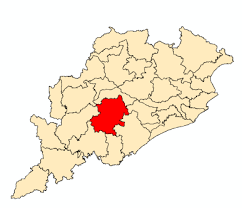Kandhamal Violence: Ethnic, Communal, Political and Extremist factors
It would be too simple an explanation to categorize or brand the recent Kandhamal incident as just ethnic or communal clashes. It could be anything from a premeditated design to a collision of socio-political-religious factors to the involvement of extremist forces. But it cannot be the result of a minor religious tiff. The trap of violence in Kandhamal reflects the failure of civil society to address some of mankind's crucial issues.
Just a day before Christmas, the trouble started in Bamunigam village when a pandal built for Christmas celebrations was attacked and destroyed. The incident was followed by a rumour that a Christian mob at Dasingibadi had attacked prominent Viswa Hindu Parishad (VHP) leader Swami Laxmananand Saraswati. These two incidents are primarily seen as the immediate reasons that ignited a wildfire of violence across Kandhamal.
Ever since violence broke out, at least five people have been killed, and 53 churches, most of them small mud and thatch buildings, along with 800 houses, have been razed. On the other hand, in the village of Brahmangaon, a group of Christians burned down several homes belonging to Hindu people in an apparent retaliation for the attack on churches. Many claim this could be a result of the long-standing tensions between the Hindu majority and the minority Christian community over the issue of conversions. The Kandhas account for an overwhelming 51 per cent of the population who belong to Scheduled Tribe (ST) are predominantly pro-Hindu or Hindus. Nearly 70 per cent of the Dalit Panas, who constitute 18 per cent of the population, are Christians and belong to Schedule Caste (SC). These statistics themselves explain why the ethnic conflict here sometimes also assumes religious overtones. If a Dalit becomes a Christian, he/she loses all privileges and concessions available to the SCs. Still, if a tribal becomes a Christian, he/she retains all the privileges available to the STs. The Pana Christians speak the Kui language like tribal Kandhas; because of this linguistic affinity with tribals, they have been demanding ST status. This has been opposed by the VHP as well as by some prominent political leaders of Kandhamal who consider Hindu tribals as their vote bank.
It may come to many as a surprise, but the Government of Orissa confirmed the Maoist hand in the violence of Kandhamal. “We see the attack on a police station at Brahmanigaon village as a Maoist attack,” revealed the state Home Secretary T K Mishra. He said police had evidence that “the attack on Brahaminigaon police station on December 27 was carried out strategically, which was not possible by villagers. Trained hands could be behind the attack.” Brahmanigaon village is close to the Maoist-affected Adaba area of Gajapati district. Of course, it’s a fact that Maoists from neighbouring Gajapati and Rayagada districts have been making forays into interior parts of Kandhamal in the past few years.
The rise of Christian militancy in and around Kandhamal is something that has come out as an unfortunate development from the whole crisis. Even the Christian religion admits a surge in Christian militancy in some areas, especially in Bamunigaon. Though the state government has so far not accepted the new threat and has put all the blame on the Maoists, it’s time that it should wake up to those new developments, which could have serious consequences, both for the minority community and the socio-religious conflicts in future.
The Kandhamal violence was not spontaneous, nor was it an accident. This is an outburst of the last several years of latent clash of sentiments on conversion. For over three decades, Swami Laxmananand Saraswati has been the icon of the militant Hindu movement in Kandhamal. In all these years, Adivasis, Dalits, Christians, and Muslims have been targeted through social and economic boycotts and other forms of violence. In 1999, one Catholic priest from Mayurbhanj -Arul Das, was murdered, which was followed by the destruction of several churches in Kandhamal. In 2004, Raikia Catholic Church was smashed up, and eight Christian homes were burnt. In 2005, while converting 200 tribal Christians to Hinduism at Malkangiri, Swami Laxmananand Saraswati roared, “How will we ... make India a completely Hindu country? This is our aim and what we want to do.” Again, in 2006, on the occasion of RSS architect Madhav Sadashiv Golwalkar's centenary, Saraswati performed seven yagnas (Vedic Ritual) at Chakapad in Kandhamal, attended by 30,000 Adivasis. Between July and December 2007, a number of Hindutva rallies arranged across Kandhamal were instrumental in raising anti-Christian sentiments.
Conversion and evangelism are sensitive issues that must be addressed in all sensibilities. Religion should not be seen as a scale of community strength. Despite India’s claim of over 10 per cent GDP growth in recent years, nothing much has changed in the lives of tribals and Dalits. On the other hand, the people who are trying to uplift the lives of the poor are instigated through the acts of forced conversions. However, evangelism should be dealt with care. There is a growing concern about the way people go about evangelism. For evangelists, it may be the numbers that matter. However, the integrity of moral and ethical values enhances the quality of religion. Hence, evangelists need to realize that if there is no quality, only quantity, it will go nowhere. People are fighting it out ugly over the issue of conversion and evangelism. Still, the contractors of religions must realize that common people want to live with religion, and no religion wants people to be killed in its name. Let’s take a lesson from this and work together to improvise upon the societal norms, which would allow each and every Indian to grow, ultimately resulting in the growth of the nation.
